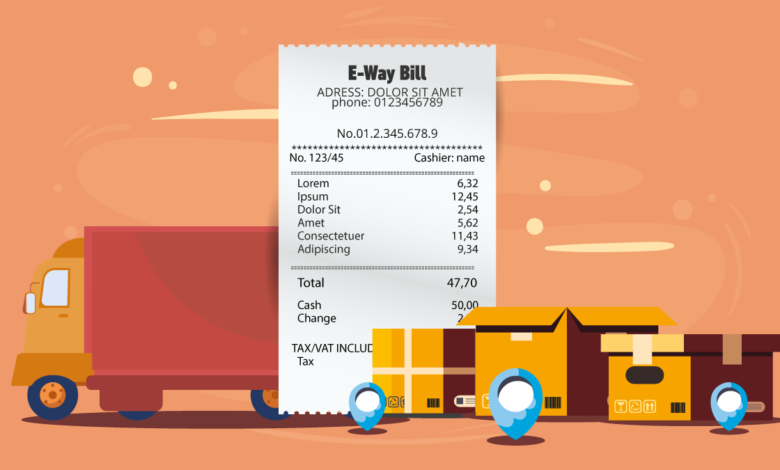Understanding the Dynamics of Shipping Bills and Eway Bills in Import-Export Logistics

In the complex world of import-export logistics, efficient documentation is paramount to the seamless movement of goods across borders. Among the plethora of documents involved, shipping bills and eway bills play crucial roles in ensuring that shipments are processed smoothly and legally. A deep understanding of how these bills work is essential for businesses involved in international trade, as it can significantly impact their operational efficiency, compliance, and overall success.
Read Also: iBomma1.com
Shipping Bills: An Overview
The shipping bill is a vital document in international trade, specifically in the export process. It acts as the declaration of goods being exported and is an integral part of the customs clearance procedure. For exporters, the shipping bill is essentially the permit that allows goods to leave the exporting country for their intended overseas destination.
1. What is a Shipping Bill?
A shipping bill is an official document issued by the customs department of the exporting country. It contains essential details about the goods being exported, such as their quantity, value, destination, and type, among others. It serves as proof of the export transaction and is required for customs clearance.
REad Also: unfgamings.net/
2. Components of a Shipping Bill
- Exporter and Importer Details: Information about the exporting and importing parties.
- Description of Goods: Detailed description including quality, quantity, and value.
- HS Code: Harmonized System Code for classifying the goods.
- Destination: Final destination of the goods.
- Shipping Route and Transportation Mode: Details about the transportation method and route.
- Export Duty: Mention of any export duties applicable.
- Insurance Details: Insurance information for the shipment, if applicable.
3. Types of Shipping Bills
Shipping bills can vary based on the nature of the export, such as:
- Free Shipping Bill: For goods that are duty-free.
- Duty Drawback Shipping Bill: Used when the exporter is eligible for duty drawbacks.
- Bonded Shipping Bill: Applicable for goods from bonded warehouses.
- Coastal Shipping Bill: For goods being transported along the coast within the same country.
4. The Process of Obtaining a Shipping Bill
- Preparation: Exporters prepare shipping bills using online customs systems or customs brokers.
- Submission: The document is submitted to the customs authorities for verification.
- Assessment: Customs officials assess the shipping bill along with other documents and may inspect the goods.
- Approval: Once approved, the shipping bill acts as a clearance for the goods to be shipped out.
5. Importance of Shipping Bills in Export Logistics
- Legal Compliance: Essential for adhering to customs regulations.
- Financial Security: Facilitates invoice generation, duty refunds, and insurance claims.
- Operational Efficiency: Expedites the export process and minimizes delays.
Eway Bills: An Overview
While shipping bills are critical to the export process, eway bills are indispensable in the domestic sphere, particularly in countries like India where they have been implemented to streamline goods transportation under the GST regime. Eway bill ensures the smooth movement of goods within the country, preventing tax evasion and enhancing transparency.
1. What is an Eway Bill?
An eway bill is an electronic document required for the transportation of goods valued above a specified threshold within a country. It contains details about the goods, the transporter, and the parties involved in the transaction.
2. Components of an Eway Bill
- Supplier and Recipient Information: Details of the parties involved.
- Description of Goods: Information on the type and value of goods.
- Transporter Details: Information about the transporter of the goods.
- Transport Document Number and Date: Details of the transport vehicle’s registration.
3. The Process of Obtaining an Eway Bill
- Generation: It is generated online through the government portal by the supplier, recipient, or transporter.
- Possession: The transporter carries a copy of the eway bill.
- Verification: Traffic and tax officials can verify eway bills during transit.
- Usage: It is valid for a specified period depending on the distance to be covered.
4. Importance of Eway Bills in Domestic Logistics
- Regulatory Compliance: Ensures adherence to tax regulations.
- Reduced Tax Evasion: Helps in tracking and authenticating shipments.
- Efficient Movement: Streamlines the transportation process within the country.
Relationship Between Shipping Bills and Eway Bills in Trade Logistics
In many logistics scenarios, the roles of shipping bills and eway bills intersect, particularly when goods move from inland areas to ports for export or from ports to inland destinations upon import. Understanding this relationship is crucial for businesses involved in both international and domestic trade. To streamline such operations, businesses can explore tools like the Bajaj Finserv app, which offers features to manage invoices, credit, and financial records—helping ensure smooth coordination in trade logistics.
1. From Export Warehouse to Port
- Eway Bills: Used to transport goods from the warehouse to the port. They ensure regulatory compliance within the country and provide details for monitoring the goods in transit.
- Shipping Bills: Once goods reach the port, a shipping bill is generated for customs clearance, enabling legal export.
2. From Port to Import Destination
- Shipping Bills: Accompany the imported goods to confirm their legal entry into the country.
- Eway Bills: Generated for the further transportation of these goods to their final destination within the country.
Challenges and Solutions in Managing Shipping Bills and Eway Bills
While these documents facilitate regulatory compliance and logistics efficiency, businesses may encounter several challenges in managing them effectively.
1. Challenges in Managing Shipping Bills and Eway Bills
- Complex Documentation Processes: Multiple details and formalities can be overwhelming.
- Compliance with Regulatory Changes: Frequent updates in regulations require constant adaptation.
- Coordination Between Domestic and International Logistics: Ensuring seamless transition between eway bills and shipping bills.
- Technological Adaptation: Need for latest software solutions to generate and track bills.
2. Solutions and Best Practices
- Automation: Using automated systems for generating and tracking bills.
- Professional Training: Regular training for staff on compliance practices and system updates.
- Integrated Logistics Solutions: Employing integrated platforms for managing domestic and international shipping documents.
- Regular Audits: Periodic audits to ensure accuracy and compliance in documentation.
Future Trends and Innovations
As technology continues to evolve, the logistics sector is undergoing transformative changes that are likely to affect the usage and management of shipping bills and eway bills. Businesses need to be prepared for these changes to stay competitive.
1. Digitalization and Blockchain Technology
- Smart Contracts: Using blockchain for more secure and efficient processing of shipping bills and eway bills.
- Paperless Transactions: Moving towards entirely digital documentation processes to reduce errors and speed up operations.
2. Artificial Intelligence
- Predictive Analytics: Utilizing AI for forecasting logistics needs and improving efficiency.
- Automated Compliance Checks: Implementing AI-driven checks to ensure regulatory adherence.
3. Global Standards and Cooperation
- International Collaboration: Increasing cooperation between countries on standardizing documentation processes.
- Universal Tracking Systems: Development of systems that can track shipments internationally with integrated data from shipping and eway bills.
Conclusion
Shipping bills and eway bills are indispensable documents in the field of import-export logistics, each playing unique yet complementary roles. Understanding their dynamics enables businesses to achieve better compliance, security, and efficiency in both international and domestic trade. As the logistics landscape continues to evolve with technological advancements, adapting to new systems and standards will be crucial for maintaining competitiveness and ensuring the smooth flow of goods across borders.
In conclusion, businesses involved in global trade must prioritize the management of shipping bills and eway bills, keeping abreast of current regulations and technological innovations to thrive in the ever-changing world of logistics. With the right strategies and tools, they can overcome challenges and harness opportunities to optimize their logistics operations.




